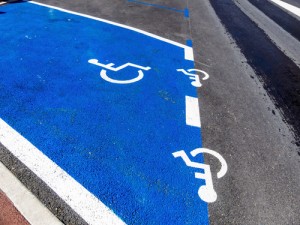 There is a valuable new tool for settlement recipients with severe disabilities: an ABLE account. With the passage of the “Achieving a Better Life Experience Act of 2014” or the ABLE Act on December 3, 2014, individuals with special needs or disabilities can now own tax-free savings accounts with up to $100,000 in funds without losing needs-based government benefits, such as Medicaid and Supplemental Security Income, or SSI.
There is a valuable new tool for settlement recipients with severe disabilities: an ABLE account. With the passage of the “Achieving a Better Life Experience Act of 2014” or the ABLE Act on December 3, 2014, individuals with special needs or disabilities can now own tax-free savings accounts with up to $100,000 in funds without losing needs-based government benefits, such as Medicaid and Supplemental Security Income, or SSI.
The Act’s stated purpose is “to encourage and assist individuals and families in saving private funds for the purpose of supporting individuals with disabilities to maintain health, independence and quality of life.”
The ABLE Act amends Section 529 of the Internal Revenue Code, which formerly only made college savings plans tax exempt. ABLE accounts are intended to provide for disability-related expenses for the individual such as education, housing and transportation so that people with severe disabilities can live and work independently. ABLE accounts are strictly for people with severe doctor-certified disabilities incurred prior to age 26 who qualify for needs-based benefits. Individuals over age 26 are eligible as long as there is documentation proving they’ve had the disability since before their 26th birthday.
The implications for people who qualify are vast, as it is a new option that provides more financial flexibility. In addition to keeping their health insurance and other needs-based aid, account holders can own and control the money they receive from settlements for their injuries, rather than relinquishing the money into a “special needs trust” administered by a third party, as was previously required.
An ABLE account can hold annual contributions of $14,000 per year (the federal gift tax limit) and the caps for total contributions vary from state to state. These caps range from $67,946 in Michigan to a high of $452,210 in Pennsylvania, while some states like Illinois do not have a lifetime cap. However, if the amount in the account exceeds $100,000 the person’s SSI payments are suspended but the owner remains eligible for Medicaid. The payments resume when the amount dips below $100,000.
It is important to note that ABLE accounts have a payback provision, which means that when the account owner dies the remaining funds must first be used to reimburse the state for the person’s Medicaid expenses. Once those expenses have been deducted, the remainder can go to a beneficiary or heir, free of gift and estate taxes.
While the ABLE account is useful as a supplemental option, it is not meant to be a replacement for structured settlements. This is due to the limitations, contribution caps and payback provisions of the new law.
Technically, individuals may begin to open ABLE accounts in 2015, however each state needs to establish its own regulations so it may take some time before they officially take effect.
As structured settlement professionals, we are always on the lookout for options to help our partners and their clients. ABLE accounts seem to be viable supplemental options, but should not be solely relied upon as a replacement for a well-developed structured settlement.
What are your thoughts on ABLE accounts? Please share your thoughts with us.


Leave a Reply